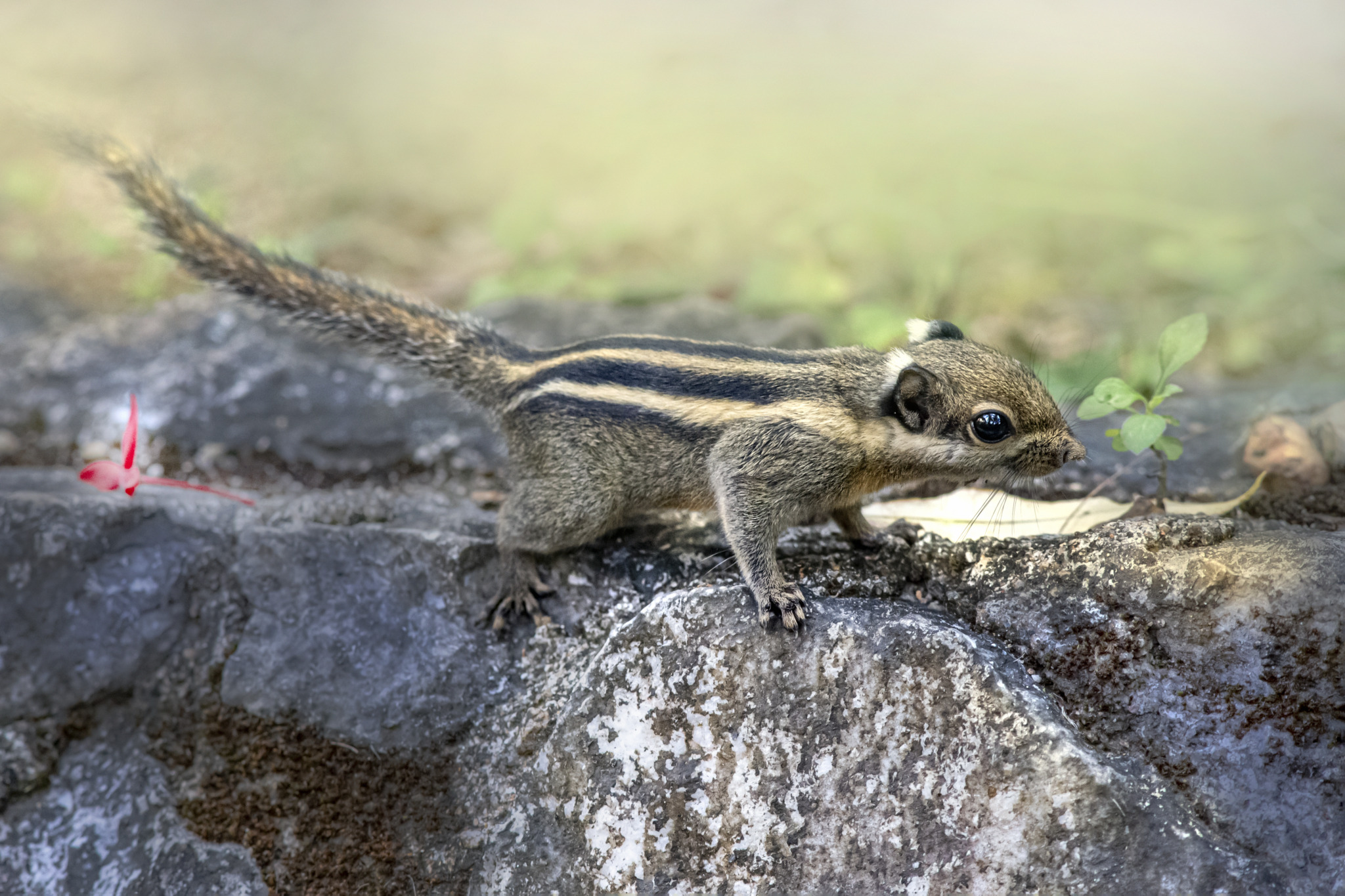The Himalayan Striped Squirrel (Tamiops mcclellandii) is a species of squirrel native to parts of Asia, particularly the Himalayan region. Here are some key characteristics and information about this fascinating squirrel:
- Appearance: The Himalayan Striped Squirrel is characterized by its distinctive appearance. It has a slender body with short fur, typically varying in color from reddish-brown to grayish-brown. One of its most notable features is the presence of three distinct dark stripes running along its back, giving it its common name. Its tail is relatively long and bushy, often with a darker stripe along its length.
- Distribution: This species is found in various countries across Asia, including Nepal, India, Bhutan, Myanmar, and China. Within its range, it inhabits forested areas, including deciduous and coniferous forests, as well as scrubland and agricultural areas.
- Habitat: Himalayan Striped Squirrels are arboreal creatures, meaning they spend much of their time in trees. They are well adapted to forested environments, where they can maneuver adeptly among branches and foliage. They also construct nests, called dreys, in the branches of trees for shelter and breeding.
- Diet: These squirrels are omnivorous, feeding on a varied diet that includes nuts, seeds, fruits, insects, and small vertebrates. They are known to cache food for later consumption, storing it in various locations within their territory.
- Behavior: Himalayan Striped Squirrels are diurnal, meaning they are active during the day. They are agile climbers and spend much of their time foraging for food in trees. Like many squirrel species, they are territorial and will defend their territory against intruders.
- Reproduction: Breeding habits of Himalayan Striped Squirrels may vary depending on their geographic location and environmental factors. In general, they breed during specific times of the year, producing litters of young. Female squirrels typically construct nests in tree branches or hollows to raise their offspring.
- Conservation Status: The conservation status of the Himalayan Striped Squirrel is not well-documented. However, like many species of wildlife, it may face threats from habitat loss, fragmentation, and human encroachment. Further research is needed to assess the population trends and conservation needs of this species across its range.
Overall, the Himalayan Striped Squirrel is a fascinating and adaptable species that plays a significant ecological role in its native habitats, contributing to seed dispersal and ecosystem dynamics. Efforts to conserve its forest habitat and mitigate human-wildlife conflicts are essential for ensuring the continued survival of this charismatic squirrel species.
Visited 846 times, 3 visit(s) today
Views: 1233
Subscribe to the newsletter:
